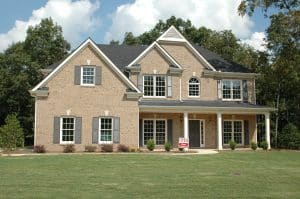Nomadic Architecture: Homes That Move With You
Nomadic architecture is a concept that has been gaining popularity in recent years. It involves designing and constructing homes that are mobile and can easily be moved from one place to another. These homes are not just limited to traditional RVs or trailers, but they can also take the form of modern, fully functional houses that are capable of being transported to various locations. The appeal of nomadic architecture lies in its flexibility and adaptability, allowing people to live wherever they desire without being tied down to a single location. In this article, we will explore the various aspects of nomadic architecture and how it is changing the way we think about home design and living.
What is Nomadic Architecture?
Nomadic architecture, also known as mobile architecture, is an innovative approach to building homes that can be easily moved from one place to another. It is a response to the increasing desire for a more nomadic and flexible lifestyle, where people are not constrained by geography and can live and work from anywhere without sacrificing the comforts of a traditional home. These homes are designed to have all the necessary amenities and are not just limited to temporary or seasonal living but can also serve as permanent residences.
The History of Nomadic Architecture
The concept of nomadic architecture is not a new one. Humans have been living nomadically for thousands of years, moving from one place to another in search of resources and better living conditions. However, the idea of designing homes specifically for this lifestyle is relatively recent. In the 1960s, the counterculture movement in the United States embraced the idea of nomadic living and popularized the use of RVs and mobile homes. Over the years, advancements in technology and building materials have allowed for the creation of more sophisticated and permanent nomadic homes.
The Benefits of Nomadic Architecture
Nomadic architecture offers a range of benefits that traditional homes cannot. One of the primary advantages is the ability to live in different locations without the hassle and cost of moving. It also provides a closer connection to nature and the freedom to choose where and how to live. Nomadic homes are also more environmentally friendly, as they tend to use sustainable and portable resources, such as solar panels and rainwater harvesting systems. Additionally, nomadic homes can be designed to be more energy-efficient, reducing the occupants’ carbon footprint.
The Challenges of Nomadic Architecture
While nomadic architecture offers many advantages, it also comes with its own set of challenges. One of the most significant challenges is finding suitable locations to park or set up the home. Many municipalities have zoning laws that restrict mobile homes or have regulations specifically for tiny homes, making it challenging to find a permanent location. Additionally, the cost of maintaining and transporting a nomadic home can be expensive, especially if it involves long-distance or international travel.
Examples of Nomadic Architecture
Nomadic architecture is a rapidly growing trend, and there are numerous examples of homes that embrace this lifestyle. The NestHouse, designed by Tiny House Scotland, is a compact and energy-efficient mobile home that is designed to be fully self-sufficient. The Ecocapsule, created by Nice Architects, is a self-sustaining tiny house that can function off-grid, perfect for remote locations. The Koda house, designed by Kodasema, is a modular home that can be easily assembled or disassembled in just a few hours.
The Future of Nomadic Architecture
As the demand for flexible and sustainable living options continues to grow, the future of nomadic architecture looks promising. With advances in technology and materials, we can expect to see even more innovative and functional designs in the world of mobile architecture. As our world becomes more global, and working remotely becomes the norm, nomadic architecture offers a solution to the desire for a more adventurous and nomadic lifestyle.
In conclusion, nomadic architecture is more than just a trend; it is a lifestyle choice that offers freedom, flexibility, and sustainability. Whether you are a digital nomad, an eco-conscious adventurer, or simply looking for a change of scenery, nomadic homes provide a unique way of living that is adaptable to your needs and desires. As technology and design evolve, we can only imagine the endless possibilities that lie ahead for this exciting and growing field.








